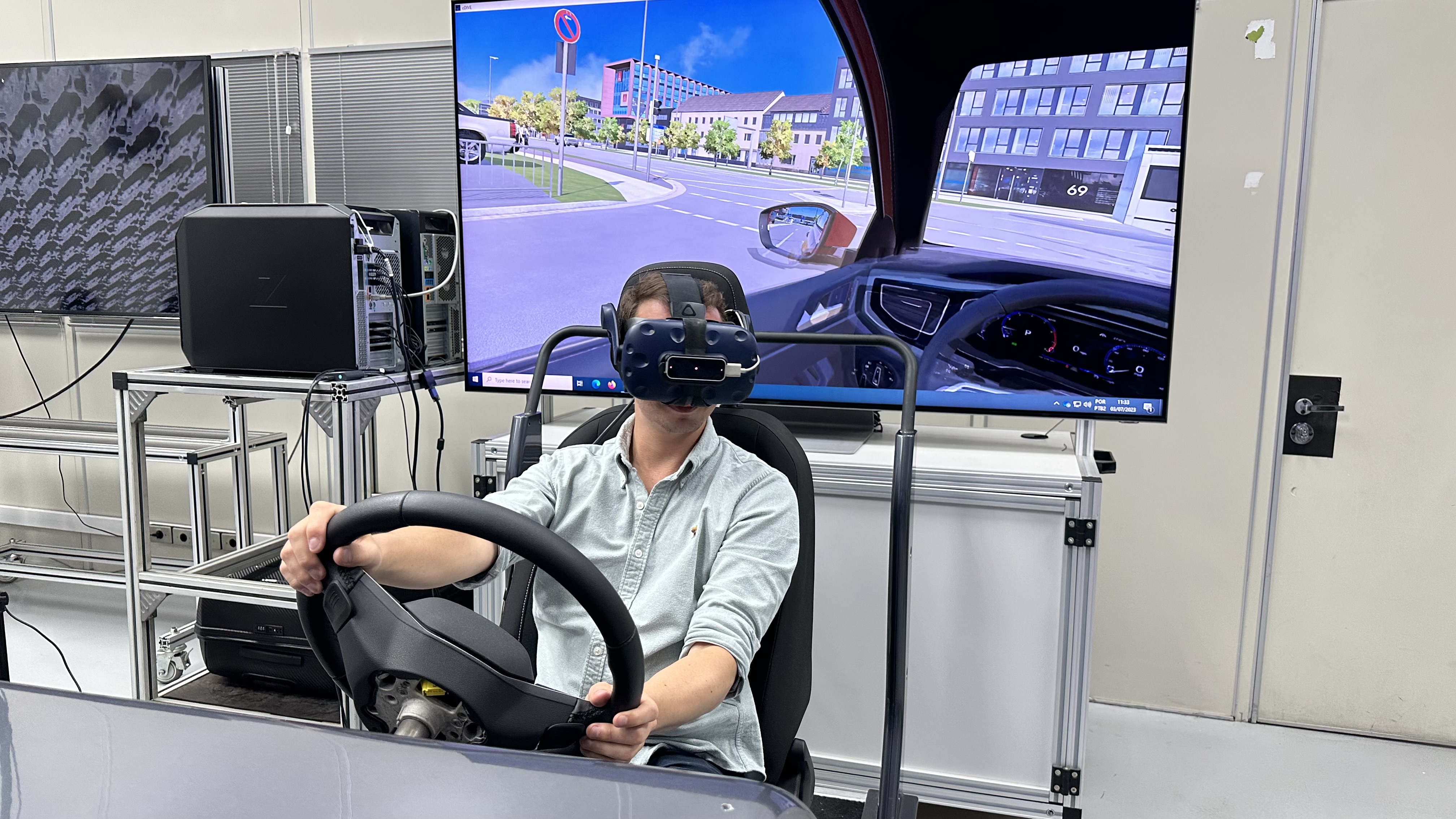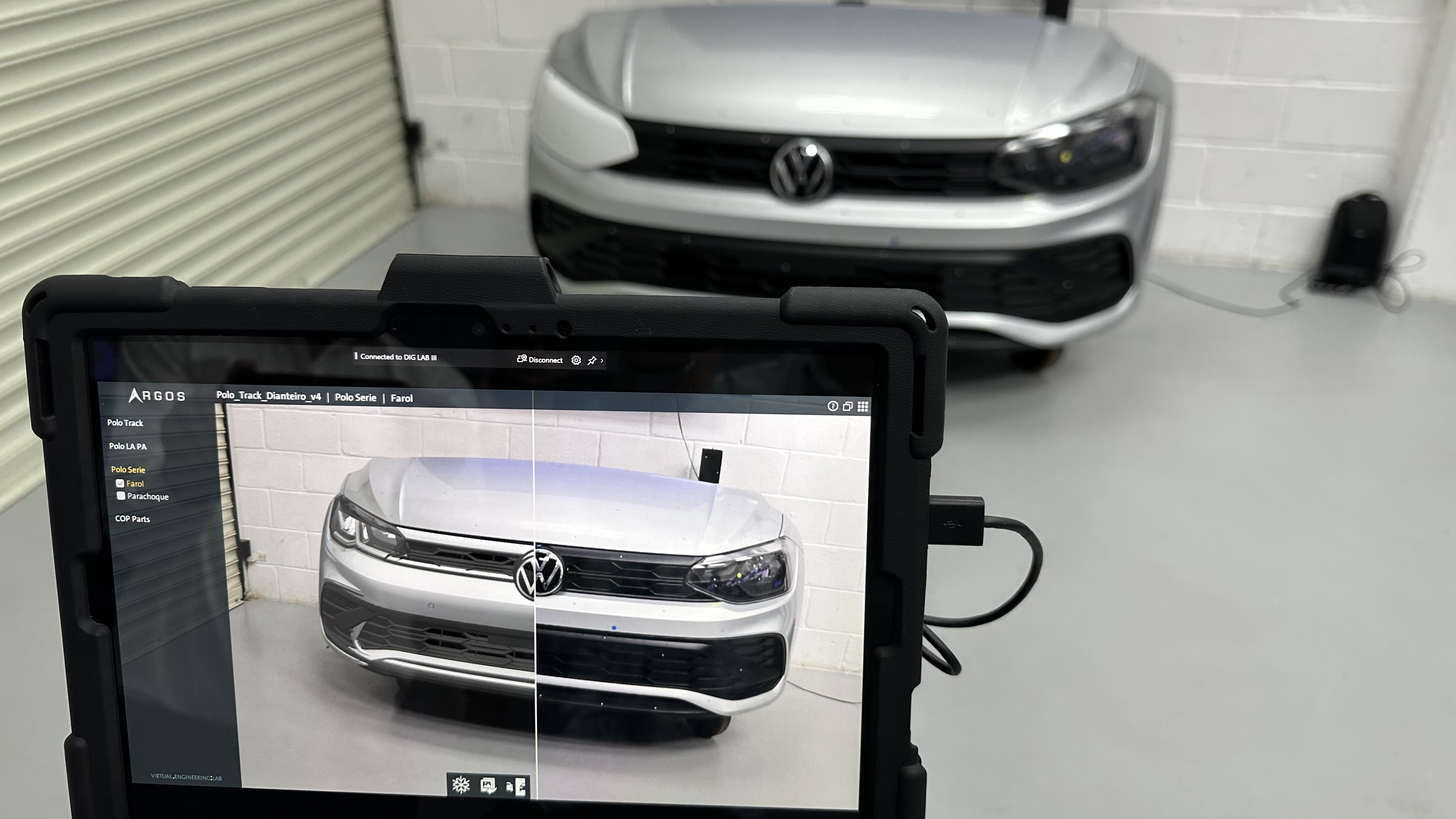AR and VR tech is being used to design new car interiors
I flew to Brazil to try out Volkwagen’s latest augmented reality technology


It would be fair to say that virtual and augmented reality technologies, while undoubtedly impressive when first used, haven’t matched the popularity of smartphones, tablets and smartwatches.
Headsets like the Meta Quest work well for gaming, but are still somewhat niche compared to gaming PCs and dedicated video game consoles.
But the modest success of VR and AR in the consumer world isn’t the whole story. The technologies have instead found a home in the design centres of car manufacturers. Here, VR headsets are used to work with virtual mockups, which can be designed, tested and modified far more quickly – and more cheaply – than physical prototypes.
I recently flew to Brazil to visit Volkswagen’s South America headquarters in São Paulo. Instead of building cars designed and developed back at the global HQ in Germany, VW’s Brazil outpost is entirely self-sufficient.
Cars intended for the South America market are designed, developed and built here from scratch, exclusively for the local market. Ever heard of the VW Gol? Probably not, but that didn't stop it being South America’s best-selling for almost 30 years, and it is a product of the São Paulo facility.

Because everything is done in-house, VW’s Brazil facility includes research and development departments. I visited one such department where interiors are designed and tested in the virtual world, before physical prototypes are constructed.
Engineers build highly-detailed digital models of a car’s interior, where the graphics look like those of a hyper-realistic video game. These are then loaded into a couple of different AR and VR headsets, worn by an engineer (or in this case, me), who sits in a simple buck with little more than a car seat and steering wheel. Since these are the driver’s only contact points with the car, the rest can be built in the virtual environment.
Get all the latest news, reviews, deals and buying guides on gorgeous tech, home and active products from the T3 experts
I’m handed a £6,500 Varjo XR-3 headset, built by a Finnish company that specialises in professional-grade virtual and mixed reality headsets for commercial use. The headset features eye and hand tracking, the latter using forward-facing cameras to overlay digital representations of my hands into my field-of-view, in real-time.
The virtual view of the car interior is incredibly lifelike, with every single interior component exactly where you’d expect it to be.

Engineers can use this virtual environment to fine-tune interior design and ergonomics. Does the touchscreen fall easily to hand? Are the cup holders in the right place? How’s over-the-shoulder visibility? Changes can be made to this virtual cockpit long before any test cars are actually built, saving a huge amount of time and money.
Next up, I swap the Varjo for a more familiar HTC Vive Pro headset. As VR early adopters might recall, this headset communicates with a pair of Lightboxes, mounted on tripods and pointed down towards the car interior buck, to help with understanding its position in the virtual environment.
The headset has a Leap Motion sensor attached to the front. This is a thermal sensor that can track the movement of the wearer’s hands and arms, then add virtual limbs into the virtual world, in real-time. The result is, at first, deeply strange.
Ignoring the Volkswagen interior for now, every person given the headset to try immediately raised their hands and exclaimed in wonder at the virtual palms, wrists and fingers floating in front of them. Even complex hand motions are faithfully recreated in the VR world.
Uncanny valley safely navigated, it was time to focus on the car interior. This time I’m sitting on a simple seat with a very basic steering wheel ahead of me. Whereas the previous buck had all five seats and a realistic wheel, this one did not.

That’s because, instead of fine-tuning the interior aesthetics, this simulation is for ergonomics and visibility. The dashboard isn’t as detailed as before, but the car is surrounded by a realistic environment, complete with passing traffic and street signs. The clever bit is how the headset offers an accurate sense of the parallax effect you get when looking around objects, like the vehicle’s A pillar, and in mirrors. Lean to the side and the mirror’s reflection changes as it would in the real world.
This sounds simple, but it’s a deeply impressive demonstration of how VR technology can make interior designers feel like they’re in a real car. Simulations like this can help designers decide on the design, size and position of the car’s mirrors, and work out whether the A, B and C pillars are causing blind spots for the driver.
The VR environment can be switched to any seat of the car, so the same person can experience the car interior from the front passenger seat, for example, or from a rear seat from the perspective of a child or a fully-grown adult. All of this gives engineers and interior designers a good sense of what customers will see, but without building much more than a single seat. Again, it’s all about learning what interior works best before building expensive physical prototypes.

Alisson Flaminio, manager of VW Brazil’s virtual lab, told T3: “The idea here is to check the customer sensations inside the car. We have sensors and everything is tracked so that 100% of the car is in the right position. Normally something like 70 different people have been interviewed [while using this VR interior] and we can ask about visibility, accessibility, sensation of comfort, position of the radio and the glovebox, for example. We gather the feedback and later on we create a report and present this [to the interior design team].”
Flaminio said a good example of how the VR technology can save time and cost is the armrest of a recent vehicle. “The position of it totally changed from the beginning to the end of the project, because all of the customers gave us feedback that they didn’t like the original design. We then had enough time to change it.”
Will VW be using the new Apple Vision Pro headset for future vehicle design? Potentially, but not just yet. Flaminio explained how any new hardware needs to be homologated by Volkswagen headquarters in Germany before it can be used by the team in Brazil.
“The problem [with Vision Pro] is the battery,” he said. “It’s a very short battery. Sometimes we will be working for seven hours a day doing this.”
Alistair is a freelance automotive and technology journalist. He has bylines on esteemed sites such as the BBC, Forbes, TechRadar, and of best of all, T3, where he covers topics ranging from classic cars and men's lifestyle, to smart home technology, phones, electric cars, autonomy, Swiss watches, and much more besides. He is an experienced journalist, writing news, features, interviews and product reviews. If that didn't make him busy enough, he is also the co-host of the AutoChat podcast.
